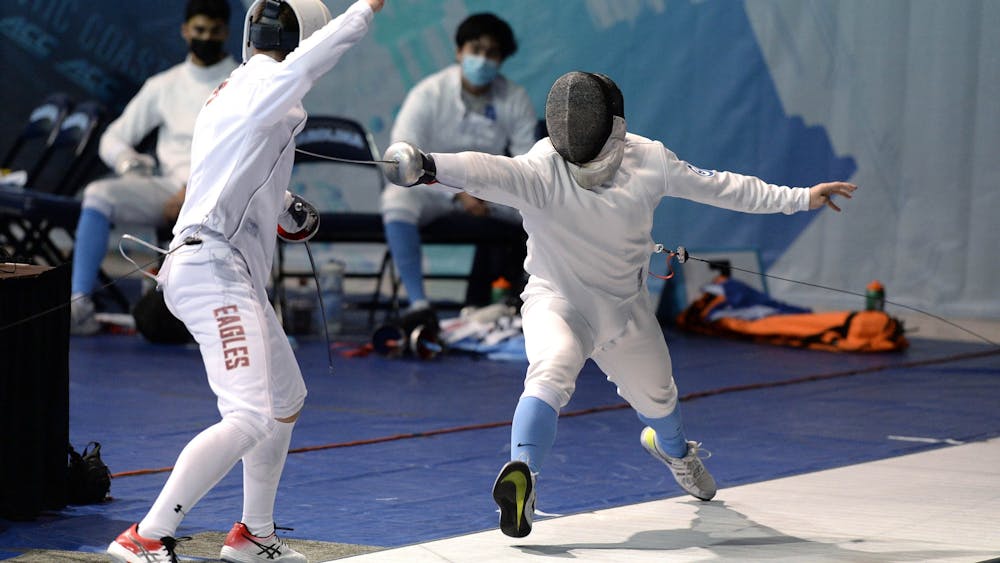The sport of fencing has two main objectives: hit and don’t get hit. Can’t be that hard, right?
In what can be described as a linear version of tag, fencing is a physically and mentally demanding sport that has created a presence within collegiate athletics for more than 40 years.
Most schools have programs that consist of men’s and women’s teams who compete and travel together, while upper levels of competition, such as regionals, have fencers competing individually. UNC has both men's and women's fencing.
While many may see fencing as two people seeing who can strike each other first, there are more intricacies most people remain unaware of. Fencers use three different weapons, each having a different blade, set of rules and target. The ultimate goal across weapons is to score a touch, which is called by a referee.
The épée requires fencers to hit their opponent with the tip of their weapon. Considered a point press weapon, the tip of an épée includes a small spring that sets off an electric sensor that validates the hit. In this game, you can hit your opponent on any part of their body, including their face mask.
The foil, another point-thrusting weapon, is supposed to mimic a version of what nobility would do when training for duels. In this game, fencers can hit their opponents anywhere in the neck, torso, groin or back, the areas where most vital organs are located.
The sabre is a weapon with no point and a cutting edge. The entirety of the blade can score a touch, and the valid target includes everything from the waist up, minus the hands. The game is meant to mimic when people would duel on horseback.
Although the sport may not look very physically taxing at first glance compared to other sports, the physical component of fencing has evolved over time.
“The sport itself has grown into being a lot more athletic,” UNC fencing head coach Matt Jednak said. “There’s a lot more motion, and the game itself is faster. You would be surprised at how much energy goes into training.”



